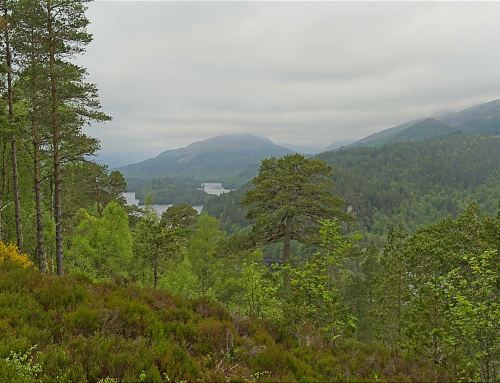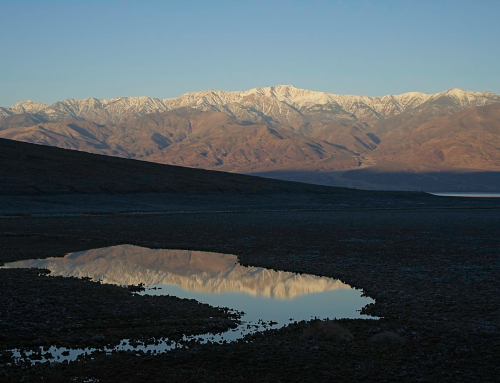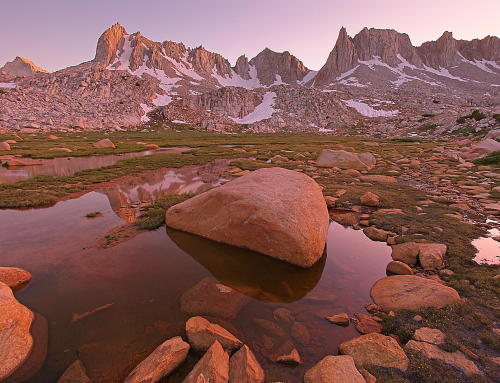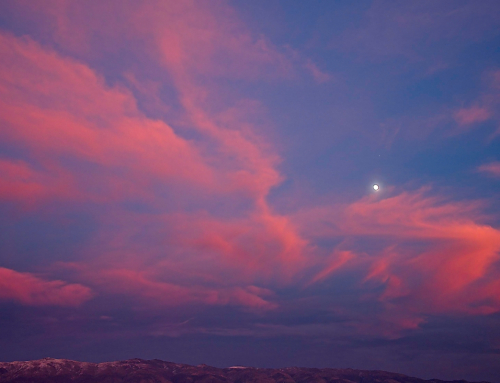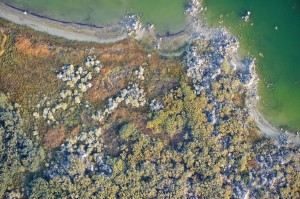
Willows above the south shore of Mono Lake
Hundreds of thousands of eared grebes spend the fall floating on Mono Lake gorging themselves on brine shrimp, and getting primed to migrate south into Mexico and Guatemala for the winter. Mono Lake, which has been estimated to have as many as 2 million eared grebes in mid-October, is the most important fall staging location in North America, supporting nearly 1/3 of the entire North American population of these gregarious birds!
We know this because of aerial photographic surveys over Mono Lake, which I was lucky to be a part of last weekend. Local Bishop pilot and owner of Black Mountain Air Service, Geoff Pope, also volunteers his time for LightHawk, an organization that coordinates flights that help support conservation work around the world. LightHawk partners with the Mono Lake Committee (MLC) every fall to conduct the eared grebe survey.
We landed briefly in Lee Vining to pick up MLC Communications Director and photographer, Arya Degenhart, who enjoyed the views and photo ops as much as I did. A recent storm, which had delayed our flight by one day, had brought a welcome whiteness to the mountain slopes above 9,000 feet, and had made the Eastern Sierra even more photogenic than usual.
The pilot’s job was to fly 16 pre-determined transects in an east-west direction over the entire 70 square-mile lake while maintaining the same altitude. My job, while leaning out the open window 1200 feet above the drink, was to get photos of the green lake with its tiny flecks of gray that represent eared grebes. With my intervalometer set to trip the shutter every 10 seconds, and bundled up with wool hat and gloves, I held my camera out the window and aimed straight down. Although this was clearly photography for science, some of it came through looking artful. Without a true sense of scale or depth, aerial photos amplify the color and patterns we see on earth’s surface below, and give a new perspective to our sense of place. Long Live Mono Grebes!
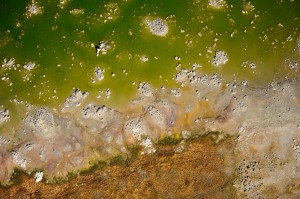
Green algae in shallow waters
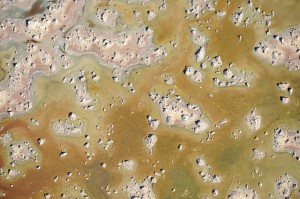
Drainage patterns on old lakebed/alkaline playa
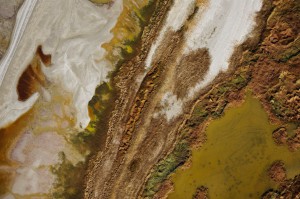
Bands of vegetation, E shore of Mono Lake
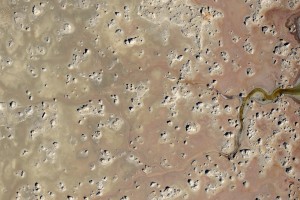
Old lakebed/alkaline flat with tufa remnants



